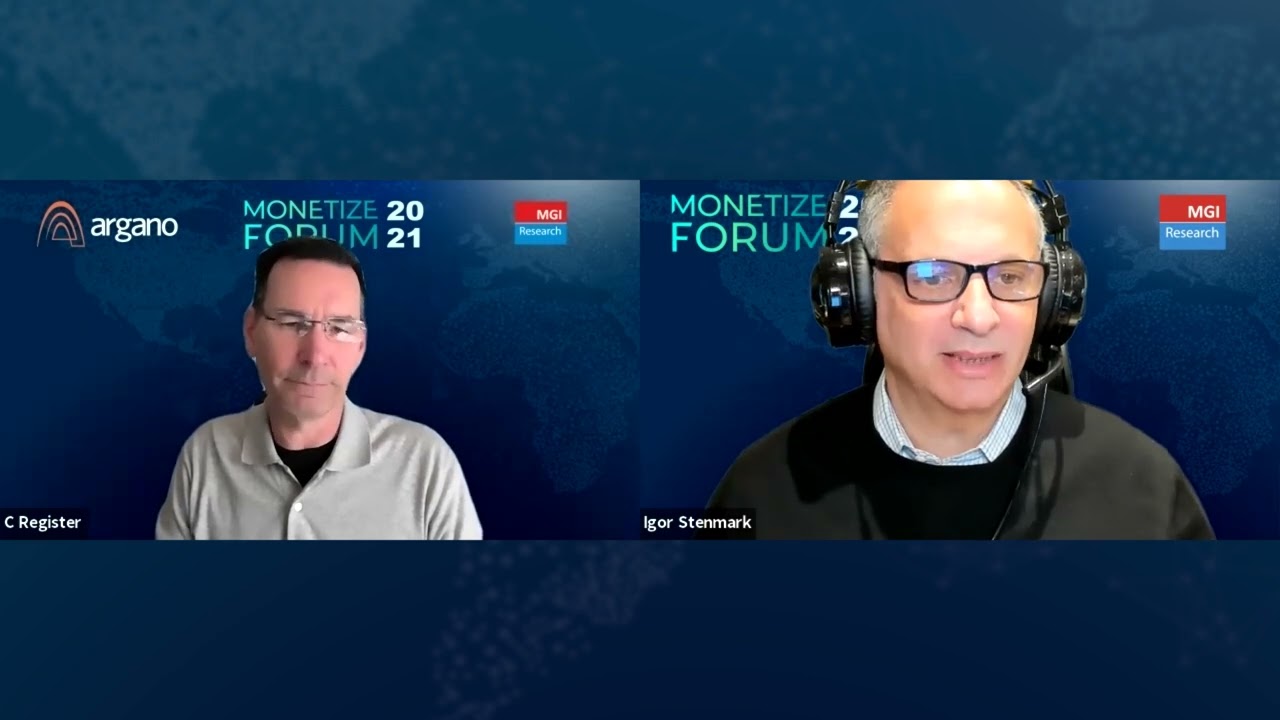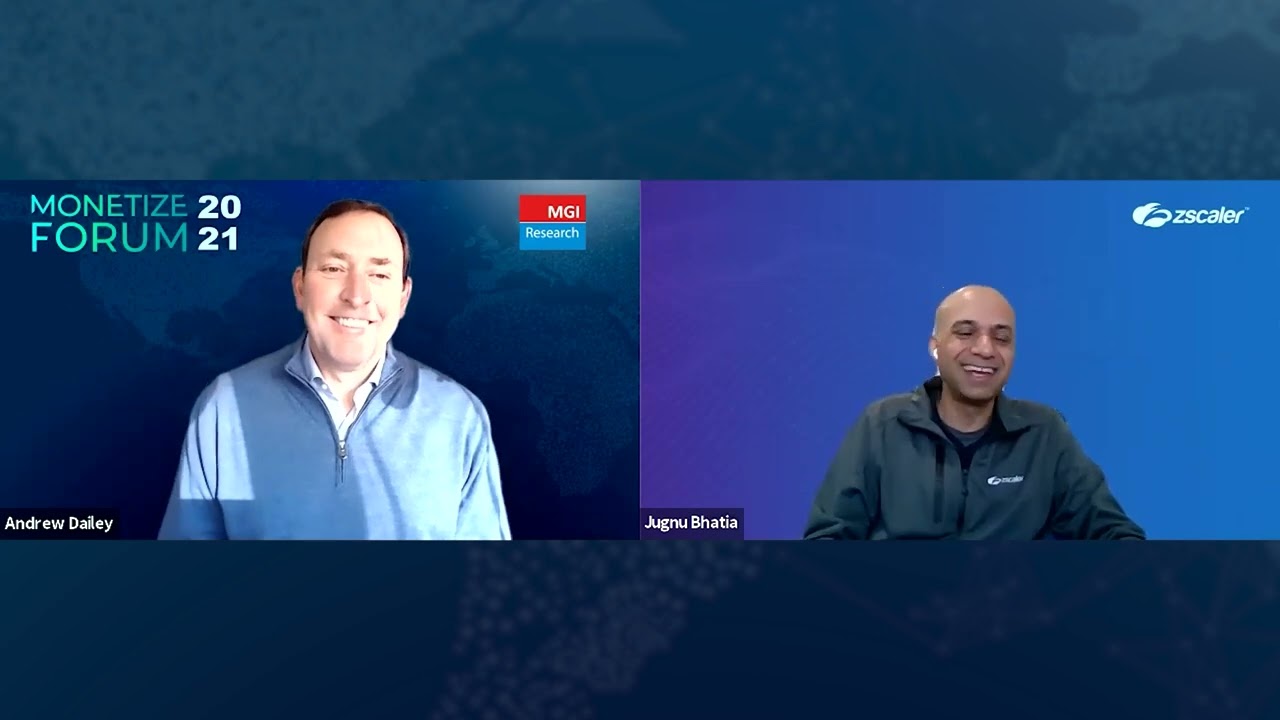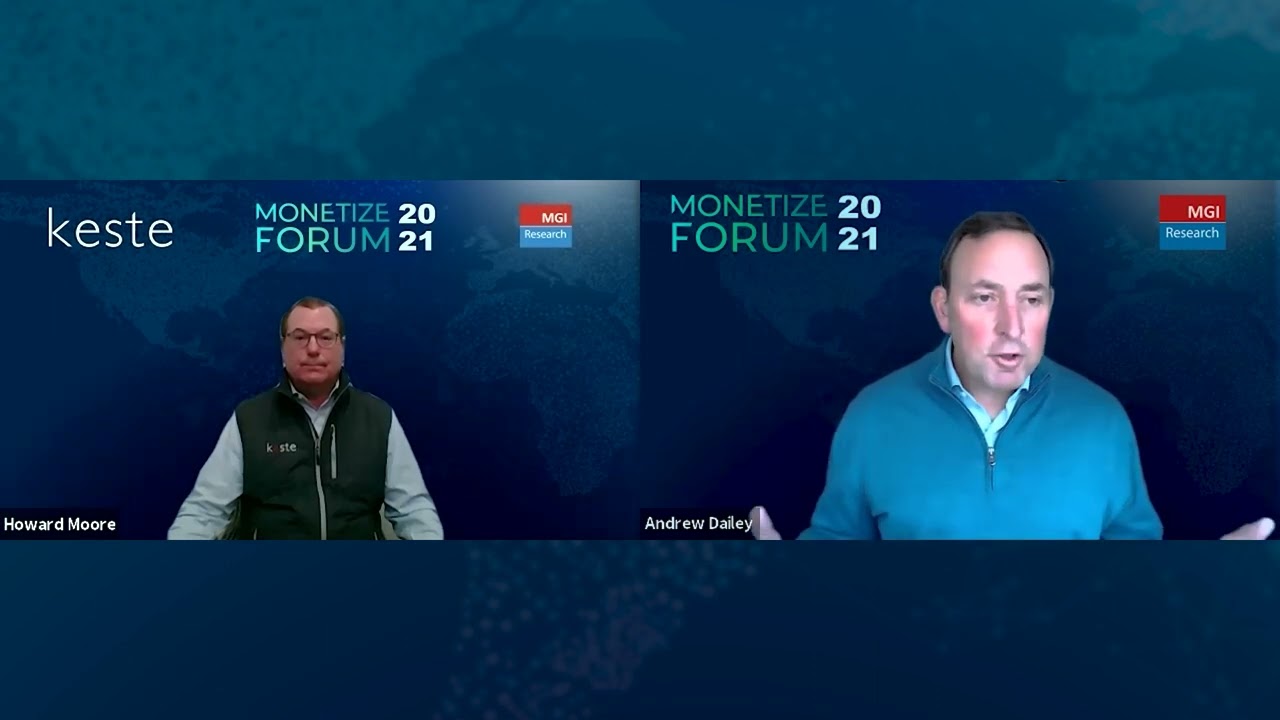For companies accustomed to a single bespoke, homegrown ERP, making the move to a multi-application quote-to-cash system can be a particularly jarring transition in both operational organization and mindset. We invited Jason Ross, CIO of document management and communications software vendor GetBusy to give a firsthand account of this journey at the 2021 Monetize Forum. Jason spoke with MGI Research analyst Igor Stenmark about how GetBusy was able to successfully integrate the specific solutions which are now enabling them to scale and innovate moving forward.
Key Issues
How has the integration process recently evolved in difficulty, risk, and cost?
When stitching together multiple solutions, how do companies decide which, if any, of the solutions will be the business hub?
What should companies prioritize in building their quote-to-cash stack?
Guest Profile
Jason is the CIO of GetBusy. With over 16 years of experience, he places a heavy emphasis on facilitating and managing change within a business through the development and implementation of specialized software. Prior to joining GetBusy, Jason was a Technical Project Manager at Linden House Software. He has a degree in Computer Science from Anglia Ruskin University.
Igor Stenmark
Hello. This is Igor Stenmark of MGI Research, and welcome to Monetize Forum 2021. Our next session is focused on how companies integrate monetization technology components into an overall quote-to-cash solution. We often cite our agile monetization platform (“AMP”) approach to quote-to-cash. AMP is a conceptual framework of modular components with functions such as billing, CPQ, financials, CLM, and a dozen others, all tied together via a single integration bus.
When we present this concept to companies, their first reaction is usually, “Okay, where can I buy all these piece components?” The reality today is that no company can buy the entire quote-to-cash solution off the shelf. You can buy some mini-suites, and you can buy some best-of-breed components, but you will have to integrate these modules into an overall solution. And when it comes to integration, application integration used to be one of the most expensive elements of an enterprise system’s portfolio. In the late 1990s, it was about 65% of an overall application budget. So even today, this is a topic that tends to cause a lot of fear and skepticism. It’s perceived as complex, brittle, high-risk, and very high-cost. And yet, over the last 10 years, there have been fundamental advances in how integration is accomplished in terms of efficiency, efficacy, and time to revenue.
Many high-growth companies have taken advantage of this transformation in integration in order to turbocharge their growth. Our guest speaker for this session is Mr. Jason Ross, who is the Chief Information Officer of software firm GetBusy, a UK-headquartered company with global operations in Europe, the Americas, Australia, and New Zealand. GetBusy built much of their quote-to-cash solution through integration, so today we will look at their experience as a case study.
As a CIO, Ross currently leads the information technology organization within GetBusy with responsibilities for strategy, implementation, operations, and budgets. He has a broad range of experience in areas including quote-to-cash, application integration, and customer service, among others. He holds a degree in computer science with honors from Anglia Ruskin University, and he joins us today from Cambridge, England.
Jason, welcome. We’re happy to have you here and are looking forward to diving into this conversation with you about your experience with quote-to-cash integration. Please give our audience some background on GetBusy—the scale, scope, and focus of your company and what you do?
Jason Ross
Thanks for having me, Igor. As you mentioned, we’re in multiple regions, and we do three main product lines—all software, two are document management systems. One is called SmartVault and is primarily sold in the UK and US; that’s an online document management system, a SaaS system. We also have Virtual Cabinet, which is our enterprise document management system, primarily sold in the UK, Australia, and New Zealand. Lastly, we have our GetBusy product, our namesake which is our new communication tool.
Across those three products, we have about 130 people on staff. That’s roughly the size of our business. The enterprise model (Virtual Cabinet) is where we focus on our quote-to-cash because of the complexity around the implementation and the product offering.
Igor Stenmark
If we were to look at your quote-to-cash stack, what does that look like? What are the key tools and elements, and what is your strategy in this area? Were you focused on leveraging complete suites, did you go for best-of breed or point solutions, or did you apply a hybrid approach in this area?
Jason Ross
Many years ago, our quote-to-cash process was in our own hybrid ERP system. We’re a software house, so we have developers and wrote that system ourselves. Therefore, our quote-to-cash process is mature today, but our approach is more strategic based on implementation change rather than what tools we’re using.
We started by moving the sales team to Salesforce, and we needed the CPQ systems to be able to do the quoting at the level of complexity we had in our bespoke system. So, we turned to a system called DealHub for that. So, the first step was Salesforce and DealHub. Then, we needed to move the billing element, which we hand off to our consultants for delivery, so they can go and actually deliver the software. We’re enterprise-based so we have a long sales cycle and long implementation times—sometimes months or years.
We looked at NetSuite and brought that in from a billing perspective, and we needed to integrate that with Salesforce. That was a tricky one because they’re both strong powerhouses, so you have to determine which one is the master and how the information flows. Bear in mind that our staff came from using a single ERP system, so they were accustomed to having every piece of information at their fingertips, whichever side of the fence it sat on.
Then, we introduced Zendesk into that mix as a support perspective. So, those are our main tools. We have Zendesk for support, and NetSuite is the heart, if you like—that’s where our billing is done, where our general ledger is done, et cetera. But for our enterprise business, that’s where our billing is done, and then our sales is in Salesforce.
Igor Stenmark
Right. How did you tie all that componentry together? How did you approach that?
Jason Ross
That was tough. Actually, in procurement of NetSuite, part of our requirement was that we had to have integration with Salesforce, and that was what we led with. That was as much of a feature as having a general ledger because we knew that was something that we needed to tackle. Also, with experience of native integrations, we were very agile. We were concerned that with native integrations between applications, they work in one way, and there’s not a lot of flexibility in them. The experience I’ve had with connecting two large applications together is that, with native integrations, you’re sometimes back to their turnkeys. You turn them on, you have a couple of options, and that’s about it.
We were coming from our old ERP system, and there was a huge amount of bespoke effort there. We had resellers that sell our product for us. If I’m honest, it sends shudders down my spine. Part of our process was that we came across a product called Celigo, and we used Celigo to create the highway between Salesforce and NetSuite, and NetSuite and Zendesk. Now, when you create a customer in Salesforce, if it meets certain sets of criteria, we create a sales order in NetSuite at the click of a button. That could be a manual process for someone winning a deal, as we don’t automate that at the enterprise level. That action sends information to NetSuite, and NetSuite sends it on to Zendesk, all using Celigo connectors and integration. Ultimately, that Celigo tool then becomes just as important as those other applications in our stack. It’s another application. It’s a platform rather than just a line on a whiteboard, and it connects them all together.
Igor Stenmark
So, that essentially became your data bus, more or less.
Jason Ross
Yes, absolutely.
Igor Stenmark
It’s a bi-directional data bus. So, I guess you’re not moving data in batches between the different systems. It’s all kind of synchronized, and, if not in real-time, it’s in quick time that’s almost real-time.
Jason Ross
Yes. It very much gets as close to real-time as possible. That was the other concern. We wanted to make sure that we didn’t have to worry about sinking into arguments over which system was the master, particularly if people were changing information in one system or another.
Igor Stenmark
When you look back at your original quote-to-cash strategy and your integration approach, would you do anything differently, and why? What worked, what didn’t, and what did you learn from that integration experience?
Jason Ross
It’s been very successful, so I would do exactly the same as we have done. Having said that, I think where we’ve had challenges is around having to import data en masse into some of those systems. That’s where the challenge for us is around integration—when we’re doing data migration. We didn’t do it all as a big bang. We did the projects in small chunks over a two-year period. At some point, we were migrating data into one of those three applications. And at that point, you have to be very careful about integration because, if you’re migrating thousands and thousands of records then integration is going to do its job and, say, send 17,000 or 100,000 records the other way. I think that’s really where our challenges came, so if we were to do it again, we would plan our migration better. In a simple example, I would make sure that when I migrate my NetSuite client data, I would be migrating it with my Salesforce already linked in it rather than letting the integration do the linking for me. That’s probably too much detail for this, though.
Igor Stenmark
No, it’s a practical approach, obviously. When new requirements come up and you have to integrate new piece parts into the overall quote-to-cash solution, do you have an overall strategy, or do you pursue a more tactical approach as things come up?
Jason Ross
Originally, we only did this for the UK and the UK Virtual Cabinet business. Last year, just before the first UK lockdown of the pandemic, we implemented Australia and New Zealand into this as well, so that required quite a big change. That meant different currencies and different fields. Different sales reps were coming on board, so we had a strategic path to get to maturity. Now, we’re at maturity, and we are very reactionary on changes that the business might want to make. We are an enterprise business, but we do sell new modules all the time. We come up with new models for our products all the time, so sometimes that comes with different billing elements. We now offer direct debit monthly options for our customers where, if you never used to, that puts higher stress on doing more regular transitions. So, the integration had to be able to cope with that or maybe categorize it. With all of those things, we do end up changing Salesforce and NetSuite on a regular basis.
Igor Stenmark
When you look at integration specifically for quote-to-cash, what kind of resources do you have committed in terms of staff, budget, and additional tools, and who owns integration?
Jason Ross
We have a team. I’m here in the UK to look after all of our systems for all of our products. It’s myself and one other member of staff, and his primary responsibility is to look after Celigo and a lot of the other integrations as well. We have to deal with some change as the requirements shift and things like that, but the changes are relatively easy to do when you have a platform rather than something you’re trying to change the code in, for obvious reasons.
We can’t change the code internally, but we have our own change controller. If we’re trying to make sure people are pulling the right process, we can go through that relatively quickly. We have sandboxes for all of our systems, so we do that in the sandbox. If, for example, we wanted to create a new currency—let’s say we start to use euros rather than British pounds—that is a very easy test and change to do in the Celigo product because it’s a point in the interface, and we can create mappings between the two optimizations (or even with a third one with Zendesk). So, we can come up with our own customization in the integration as well very, very quickly.
Igor Stenmark
Speaking of change management, years ago, integration used to be this discipline where you take two systems, you freeze the design, you build the integration, and you hope and pray for the best because if one of them changes 1%, it’s like a physical brick and mortar bridge—if things move suddenly, the building is no longer stable. For a modern, high-growth company like yours, that just seems to be completely unworkable. Given the depth of integration requirements that you guys have, how do you manage change when it comes to integration?
Jason Ross
Most of the change is established by us, so unless it’s a business change request where, typically, someone from our department is in the driver’s seat, it usually comes from someone saying, “This isn’t working,” or “Why doesn’t this record have this information on it?” and then we look back at the integration to find out whether it’s caused by the integration or whether it’s a problem in NetSuite, Salesforce, or the platform customer relation interface.
The change management is relatively straightforward for us to do when we have a tool that’s fitting the bits together rather than us having to speak to developers about, for example, whether there’s a field that’s capturing the API. We get detailed logs with Celigo and other tools like Celigo, one way or the other. You can troubleshoot it quickly and, usually, we apply the change as part of the fix to an issue.
It’s very proactive, though, as opposed to being reactive, because these tools will know about the problems before the users do, unlike normal integrations which are silent. With those, issues just happen in the background, and only when a user puts their hand up nine months later about some record that didn’t sync and can’t be found do we hear about the problem. With this newer tool and with reporting, it’s much more proactive. I can talk about Celigo as an example, but other integration tools like Zapier and Segment have similar reporting tools, and they all flash warning signs at us as soon as these things go wrong. Then we can jump on it, and we usually do so before the users are aware of it.
Igor Stenmark
It sounds like a very different experience from what companies used to go through 15 or 20 years ago.
Jason Ross
Yes, exactly.
Igor Stenmark
What are your plans to expand integration? What’s on your wish list? Are you bringing in new systems or new capabilities? Where do you have new challenges?
Jason Ross
Our challenges relate to the fact that we like to keep evolving. We try to stay in front of the innovation curve. We’re actually looking at trying to integrate our own GetBusy application into as much of our own product offering to our customers as possible. It’s something we sell our customers, so we want to also integrate those tools into our business processes. GetBusy is a new communication tool. Instead of sending someone an email to do something, we’ll send them a GetBusy to give them an actionable task. We’re looking at integrating those into our processes rather than having email do it.
Igor Stenmark
Yes. Let me ask you a bit of a side question here. As a growth company, what did you guys learn from the pandemic cycle—specifically, as that applies to quote-to-cash and in general too, about your workplace and workforce?
Jason Ross
We learned that we did the project at the right time. Before we had these systems connected, we used to have a scenario where the sales team would often be tapping people on the shoulder or ringing them up to say, “I’ve won this deal. Can we convert it?” because it had to be checked and the sales manager was involved. Having these new tools during the pandemic meant that the system was driving all of the communication, so we didn’t have to worry too much about manual steps.
That definitely helped from the integration perspective. I knew that our finance team could operate purely out of NetSuite, I knew that our sales team could operate purely out of Salesforce, and I knew that our support team could operate purely out of Zendesk. We didn’t have to worry about them putting their hands up to communicate with other people. Not that we have a problem with that, but it would have been very difficult during the pandemic if we had our old systems—let’s put it that way.
Igor Stenmark
In closing, what is one thing that every company should know about GetBusy but doesn’t? What’s your secret?
Jason Ross
We’re very agile. We’re fast-moving, and we like to constantly innovate and use all that we learn from others as well, which is why we do things like this. We actually find there’s a shortage of people sharing how they tackle these sorts of problems, and we feel that we’re definitely a company that likes to share what we do as much as possible. In that way, we can help others. We feel similarly about our own tools. Our GetBusy tool is something that will be making big changes in the way people do business. It’s been very successful so far, and we’re looking forward to continuing that success.
Igor Stenmark
Jason, many thanks for joining us here today. We appreciate your participation. I would encourage everybody who’s listening to send your questions to Jason and enjoy the rest of Monetize Forum 2021. Thank you very much, Jason. We hope to see you again.




